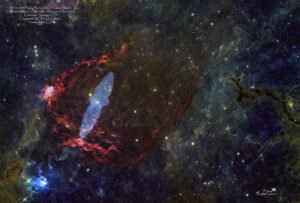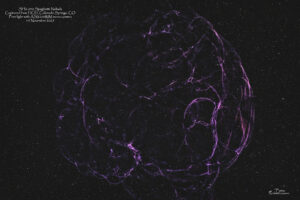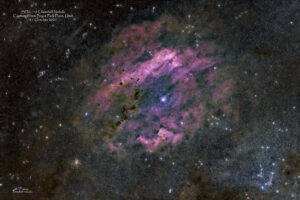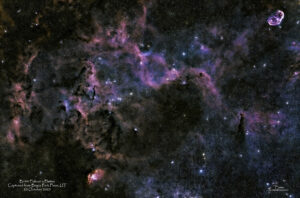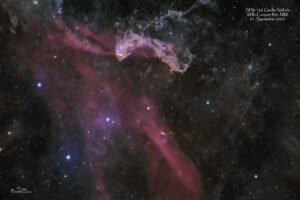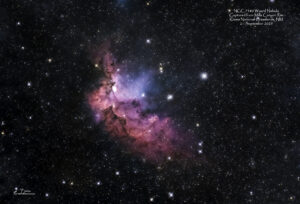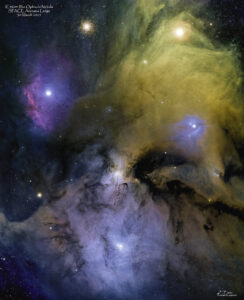Deep Sky Objects
Nebulae
What is a Nebula?
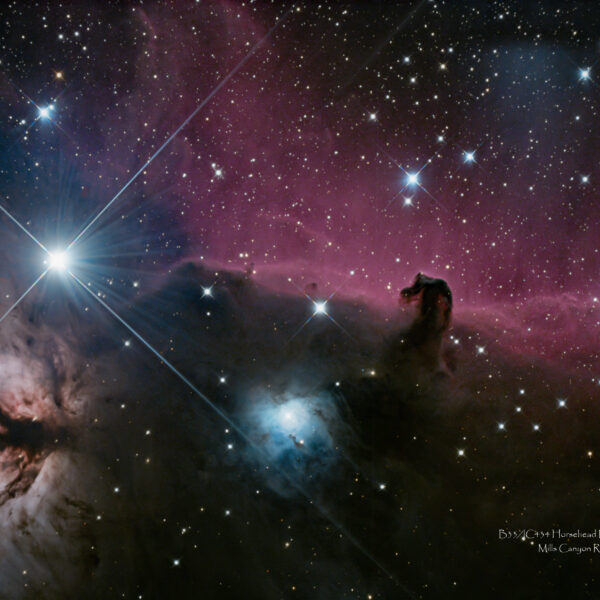
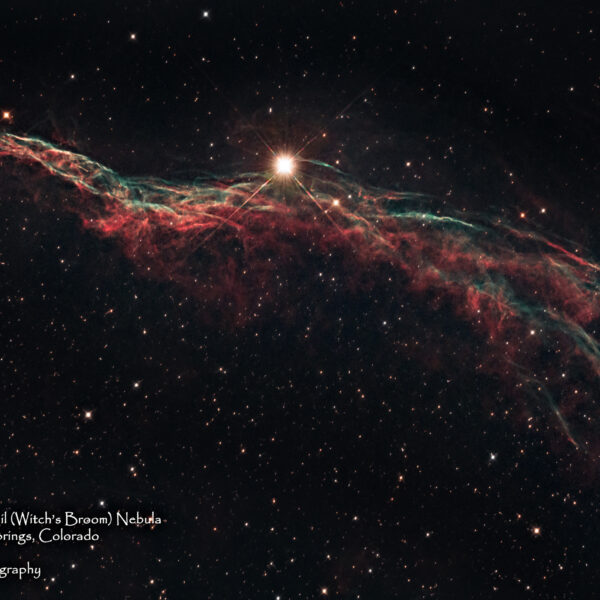
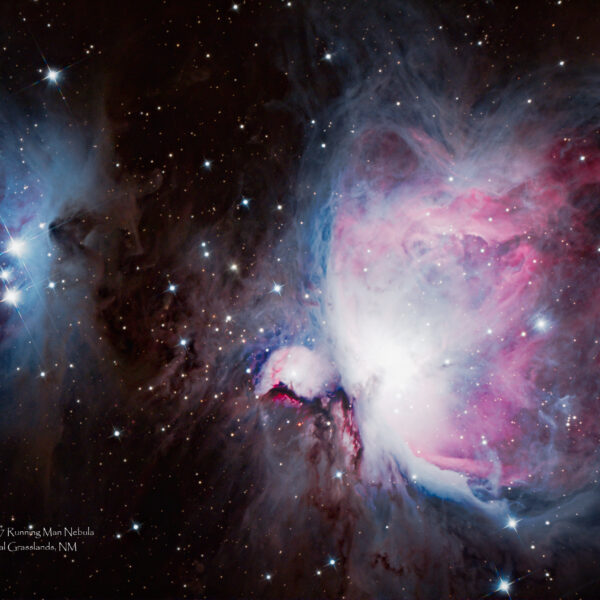
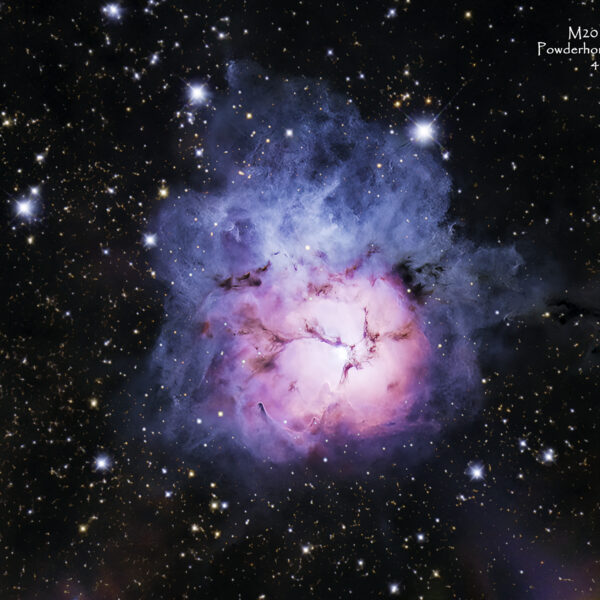
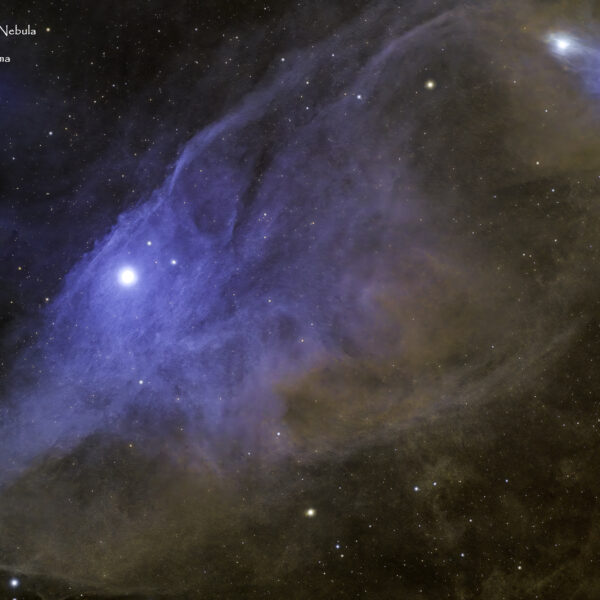
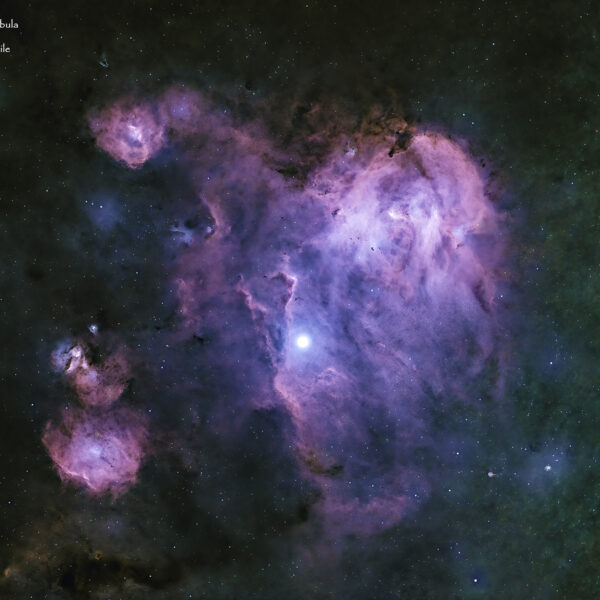

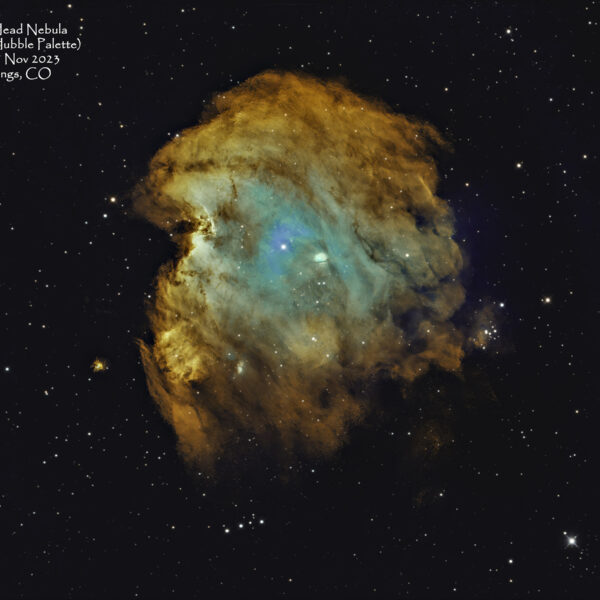
Oxford Dictionary’s official definition of a nebula: a cloud of gas and dust in outer space, visible in the night sky either as an indistinct bright patch or as a dark silhouette against other luminous matter. As you can see from the images in this section of the website – nebulae are so much more! They are beautiful, awe-inspiring works of art…
A nebula (‘cloud’ or ‘fog’ in Latin; pl. nebulae, nebulæ or nebulas) is a distinct luminescent part of interstellar medium, which can consist of ionized, neutral, or molecular hydrogen and also cosmic dust. Nebulae are often star-forming regions, such as in the “Pillars of Creation” in the Eagle Nebula. In these regions, the formations of gas, dust, and other materials “clump” together to form denser regions, which attract further matter and eventually become dense enough to form stars. The remaining material is then thought to form planets and other planetary system objects.
Originally, the term “nebula” was used to describe any diffused astronomical object, including galaxies beyond the Milky Way. The Andromeda Galaxy, for instance, was once referred to as the Andromeda Nebula (and spiral galaxies in general as “spiral nebulae”) before the true nature of galaxies was confirmed in the early 20th century by Vesto Slipher, Edwin Hubble, and others. Edwin Hubble discovered that most nebulae are associated with stars and illuminated by starlight. He also helped categorize nebulae based on the type of light spectra they produced.
{ From: https://en.wikipedia.org/wiki/Nebula }
Objects named nebulae belong to four major groups. Before their nature was understood, galaxies (“spiral nebulae”) and star clusters too distant to be resolved as stars were also classified as nebulae, but no longer are.
- H II regions, large diffuse nebulae containing ionized hydrogen
- Planetary nebulae
- Supernova remnant
Diffuse Nebulae
Most nebulae can be described as diffuse nebulae, which means that they are extended and contain no well-defined boundaries. Diffuse nebulae can be divided into emission nebulae, reflection nebulae and dark nebulae.
Visible light nebulae may be divided into emission nebulae, which emit spectral line radiation from excited or ionized gas (mostly ionized hydrogen); they are often called H II regions, H II referring to ionized hydrogen), and reflection nebulae which are visible primarily due to the light they reflect.
Reflection nebulae themselves do not emit significant amounts of visible light, but are near stars and reflect light from them. Similar nebulae not illuminated by stars do not exhibit visible radiation, but may be detected as opaque clouds blocking light from luminous objects behind them; they are called dark nebulae.
Although these nebulae have different visibility at optical wavelengths, they are all bright sources of infrared emission, chiefly from dust within the nebulae.
Planetary Nebula
Planetary nebulae are the remnants of the final stages of stellar evolution for mid-mass stars (varying in size between 0.5-~8 solar masses). Evolved asymptotic giant branch stars expel their outer layers outwards due to strong stellar winds, thus forming gaseous shells while leaving behind the star’s core in the form of a white dwarf. Radiation from the hot white dwarf excites the expelled gases, producing emission nebulae with spectra similar to those of emission nebulae found in star formation regions. They are H II regions, because mostly hydrogen is ionized, but planetary are denser and more compact than nebulae found in star formation regions.
Planetary nebulae were given their name by the first astronomical observers who were initially unable to distinguish them from planets, and who tended to confuse them with planets, which were of more interest to them. The Sun is expected to spawn a planetary nebula about 12 billion years after its formation.
Supernova Remnant
A supernova occurs when a high-mass star reaches the end of its life. When nuclear fusion in the core of the star stops, the star collapses. The gas falling inward either rebounds or gets so strongly heated that it expands outwards from the core, thus causing the star to explode. The expanding shell of gas forms a supernova remnant, a special diffuse nebula. Although much of the optical and X-ray emission from supernova remnants originates from ionized gas, a great amount of the radio emission is a form of non-thermal emission called synchrotron emission. This emission originates from high-velocity electrons oscillating within magnetic fields.
{ From: https://en.wikipedia.org/wiki/Nebula }

